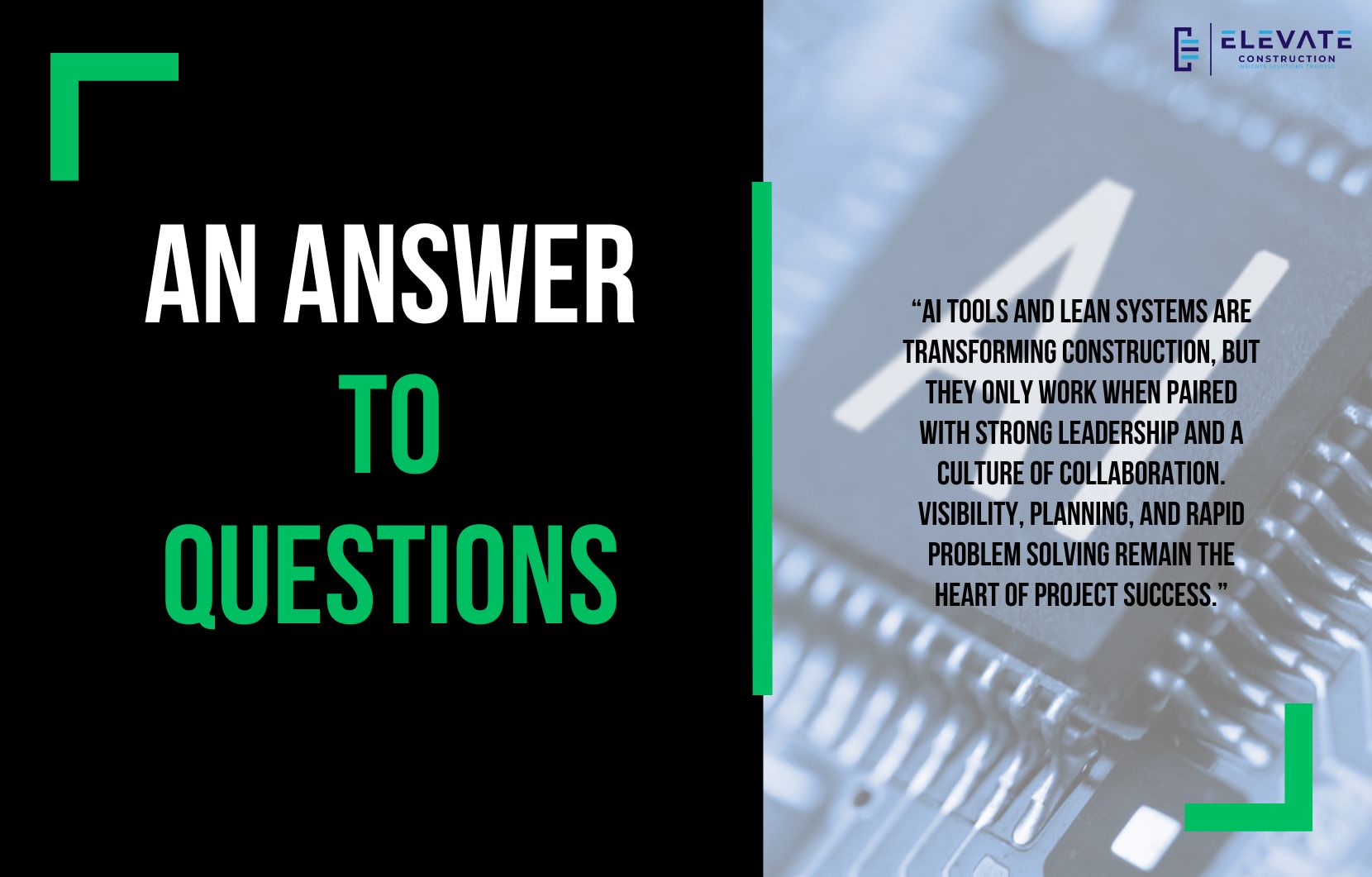Using AI and Lean Methods to Improve Construction Projects
Construction is changing faster than ever, and technology is at the center of that transformation. Recently, I had the chance to reflect on updates in our own work, respond to a listener’s message, and share thoughts on how artificial intelligence and lean systems are shaping the future of our industry.
It is an exciting time. Between publishing new book updates, developing training programs like the SuperPM bootcamp, recording video series for students, and planning new one-day builder huddle events, the momentum continues to grow. Each of these efforts is part of a bigger mission: to equip workers and leaders with practical tools that elevate their projects and their careers.
One listener who manages wastewater treatment plant construction sent thoughtful questions about how AI and lean systems fit into real project workflows. His curiosity reflects a growing awareness that construction leaders cannot afford to ignore technology. I want to share those questions and my reflections here because they represent the conversations happening across the industry right now.
The first question was about AI in takeoffs, documents, RFIs, submittals, and meeting notes. The answer is that AI is already here in these areas. For takeoffs, estimating platforms are emerging that accelerate quantity calculations. Some are even experimenting with bid analysis tools that aggregate proposal data, though they still need refinement. Document management is a tougher nut to crack, but RFIs and submittals are areas where AI shines. Drafting RFIs, generating submittal registers, and tracking responses can be done more quickly and consistently with AI support. Meeting notes are another area where AI provides tremendous value. Automatic transcription and summarization save hours, but I caution that critical items should still be handwritten or personally documented. Writing things down programs not only the AI but also our own minds.
When asked what AI programs I use, my go-to remains ChatGPT because much of my work is writing. However, our team explores other specialized platforms where needed. Alice Technologies offers AI scheduling, though its reliance on CPM raises concerns about true optimization. PYPE extracts submittal requirements directly from specifications. ProEst provides predictive cost estimating. NPlan analyzes past project schedules to forecast risks. Evercam tracks equipment and productivity through site cameras, and OpenSpace captures 360-degree site reality. Each of these platforms addresses specific challenges, and having an AI consultant on our team has accelerated adoption.
We have also experimented with chatbots trained on my own content to answer questions as if I were in the room. Even AI avatars have been tested, though current visuals are not convincing enough to replace authentic video. The technology is promising but still maturing.
The listener also asked about lean methods, specifically first planner, takt, and last planner systems. These are powerful tools when used in the right context. First planner is for high-level project planning, where the direction and sequencing of work are determined. Takt provides the rhythm and flow that allow teams to move together smoothly through zones of work. Last planner involves the trade partners directly, making sure the people doing the work commit to the plan and continuously adjust it. These systems complement one another and provide a structure where everyone sees the path forward.
Another question was about handling roadblocks. Should they be prioritized, logged, or integrated into the schedule? In my experience, roadblocks are better visualized than hidden in lists. Expanded 3D maps on the wall allow teams to physically mark barriers with red magnets or stickers, making problems visible to everyone. Once visible, they can be solved quickly. While some people prefer logs or schedules, the danger is that roadblocks end up deprioritized and ignored until they become critical. Clearing the path early and often is far more effective than overthinking which ones matter most.
All of these conversations point back to a bigger truth. Technology like AI is only as effective as the systems and culture it supports. Lean methods provide the structure, and AI accelerates the execution. Together they help us plan better, respond faster, and reduce waste. But at the end of the day, success still depends on leadership, discipline, and collaboration.
Construction has always been about people building together. Tools will change, but the principles remain. Protect finished work, plan with clarity, engage your team, and clear the way for progress. Whether through AI platforms, lean production systems, or better visualization of roadblocks, the goal is the same: make construction more predictable, more collaborative, and more rewarding.
On we go.
Key Takeaway
AI tools and lean systems are transforming construction, but they only work when paired with strong leadership and a culture of collaboration. Visibility, planning, and rapid problem solving remain the heart of project success.
If you want to learn more we have:
-Takt Virtual Training: (Click here)
-Check out our YouTube channel for more info: (Click here)
-Listen to the Elevate Construction podcast: (Click here)
-Check out our training programs and certifications: (Click here)
-The Takt Book: (Click here)
Discover Jason’s Expertise:
Meet Jason Schroeder, the driving force behind Elevate Construction IST. As the company’s owner and principal consultant, he’s dedicated to taking construction to new heights. With a wealth of industry experience, he’s crafted the Field Engineer Boot Camp and Superintendent Boot Camp – intensive training programs engineered to cultivate top-tier leaders capable of steering their teams towards success. Jason’s vision? To expand his training initiatives across the nation, empowering construction firms to soar to unprecedented levels of excellence.
On we go

